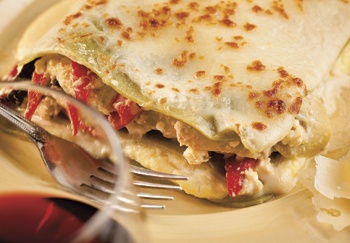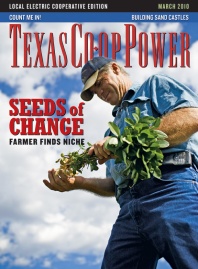By now, most of you have probably heard about the concept of your “carbon footprint,” which refers to the amount of carbon dioxide released into the atmosphere based on certain activities you perform in your daily life.
Author Kate Heyhoe has given thought to a specific type of carbon footprint, what she calls your “cookprint,” which includes everything you buy and do to feed yourself and your family. In her book Cooking Green: Reducing your Carbon Footprint in the Kitchen the New Green Basics Way (De Capo Press, 2009), she examines all aspects of food preparation and offers suggestions on how you can improve efficiency in the kitchen. Appliances, she writes, account for 30 percent of the total energy consumed in our homes.
The book includes lists of tips for reducing your cookprint, which will save you money on your energy bills to boot.
Some of these cooking methods will take you time and experience to perfect, but if you can get the hang of it, you should start to see some benefits when bill time comes around.
Here is a recipe from the book that combines several fuel-efficient methods to cut in half the cooking time of a traditional lasagna.
Short-Cut Passive Lasagna
9 lasagna noodles
3 to 4 teaspoons olive oil, divided
1 carton (15 ounces) ricotta cheese (preferably whole-milk ricotta)
1 large egg
1 large clove garlic
1 teaspoon dried marjoram or oregano
1 jar (12 ounces) roasted red peppers, drained
1 can (4.25 ounces) chopped black olives, drained
1 jar (12 ounces) quartered marinated artichoke hearts, drained
1 cup (5 to 6 ounces) crumbled feta cheese
1 jar (24 ounces) prepared pasta sauce, or home-cooked sauce
8 ounces sliced or shredded provolone cheese (about 2 cups)
Bring about 6 cups water to a boil (use electric kettle for most fuel-efficient boiling). Arrange noodles in 13×9-inch glass baking dish, in three stacks. Pour water over to cover, jiggling pan so noodles don’t stick together. Cover with larger baking dish to help hold in heat. Soak 25 to 30 minutes or until almost al dente (soaking a bit longer while you prep is OK). Separate noodles once while soaking so they don’t stick together. Remove noodles to colander to drain. Drain water from dish and wipe dry. Oil bottom and sides of dish with about 1 teaspoon of olive oil.
While noodles are soaking, beat ricotta and egg together with fork until smooth and slightly fluffy. Pour remaining olive oil in separate microwave-safe mixing bowl. Mince garlic and drop into bowl. Crumble marjoram or oregano and stir into oil. Microwave on high about 30 seconds to soften garlic. Remove bowl. Shred peppers with fingers or chop into large bites and add to bowl. Stir in olives, artichoke hearts and feta. Start layering: Spread thin coat of pasta sauce in bottom of dish (about a quarter of the jar). Top with layer of three noodles. Spread all of ricotta mixture over noodles. Spoon on another sauce layer (another quarter of jar), gently pushing it over entire ricotta surface. Add second layer of three noodles. Spread pepper mixture evenly over noodles. Add final layer of noodles, spread on remaining sauce, and top with provolone. Loosely cover with foil.
Place lasagna in cold oven and turn heat to 400 degrees. Bake 25 minutes. Remove foil, rotate pan and bake 5 more minutes. (Lasagna will not look done; the top cheese will be soft but not brown, sauce will show hints of bubbling around edges.) Turn off heat and allow to passively bake 15 minutes, until the top browns and the sauce bubbles. (Use the oven light and window to check lasagna at this point. Do not open the door.) If top still isn’t brown enough, move to a top rack, flip on the broiler, and broil for 1-2 minutes. Remove from oven and allow to rest 5 to 10 minutes. Slice and serve.
Serving size: 1 cup. Servings: 6. Per serving: 570 calories, 30.8 g protein, 28 g fat, 49.3 g ncarbohydrates, 906 mg sodium, 120 mg cholesterol


